Ford Transit vs Renault Trafic
A Comprehensive Comparison of Two Mid-Size Van Titans
When it comes to mid-size vans, two titans stand out from the rest of the pack: the Ford Transit and the Renault Trafic. These two models have been trusted to keep the wheels in motion for businesses all over the UK, each building a fantastic reputation over the years.
So, what are the similarities between the two and how do they differ? Well, in this comparison article, we cover these questions and more! Expect a full run-down of each van - including specs, dimensions, and variations - plus a closer look at features and technology, as well as fuel efficiency and each brand’s electric variant.
These vans have so much to offer businesses of all shapes and sizes, so whether you’re a plumber needing a van to transport your tools or a delivery driver who requires a decent-size van that can make light work of city life, then one of these options could prove to be your perfect partner.
Key Takeaways:
- Both the Ford Transit and Renault Trafic are highly capable mid-size vans suitable for a variety of commercial uses.
- The Ford Transit excels in reliability and versatility, and has a strong brand presence in the UK.
- The Renault Trafic offers excellent fuel efficiency, comfort, and a more modern design aesthetic.
- Ford provides more engine and configuration options, while Renault focuses on comfort and efficiency.
- The Renault Trafic is substantially cheaper than the Ford Transit.
- Both vans come with modern safety features and technology options.
- The choice between the two often comes down to specific business needs, brand preference, and available deals.
A Closer Look at the Ford Transit
A name known by many, the Ford Transit is best known for being a reliable and versatile van and is often the go-to vehicle of choice for tradespeople. It’s as tough as a trusty old pair of work boots and can pretty much adapt to any challenges you throw its way.
Think of the Ford Transit as a bit of a mix-and-match option; there’s a variant to suit almost every type of business, as we explain below:
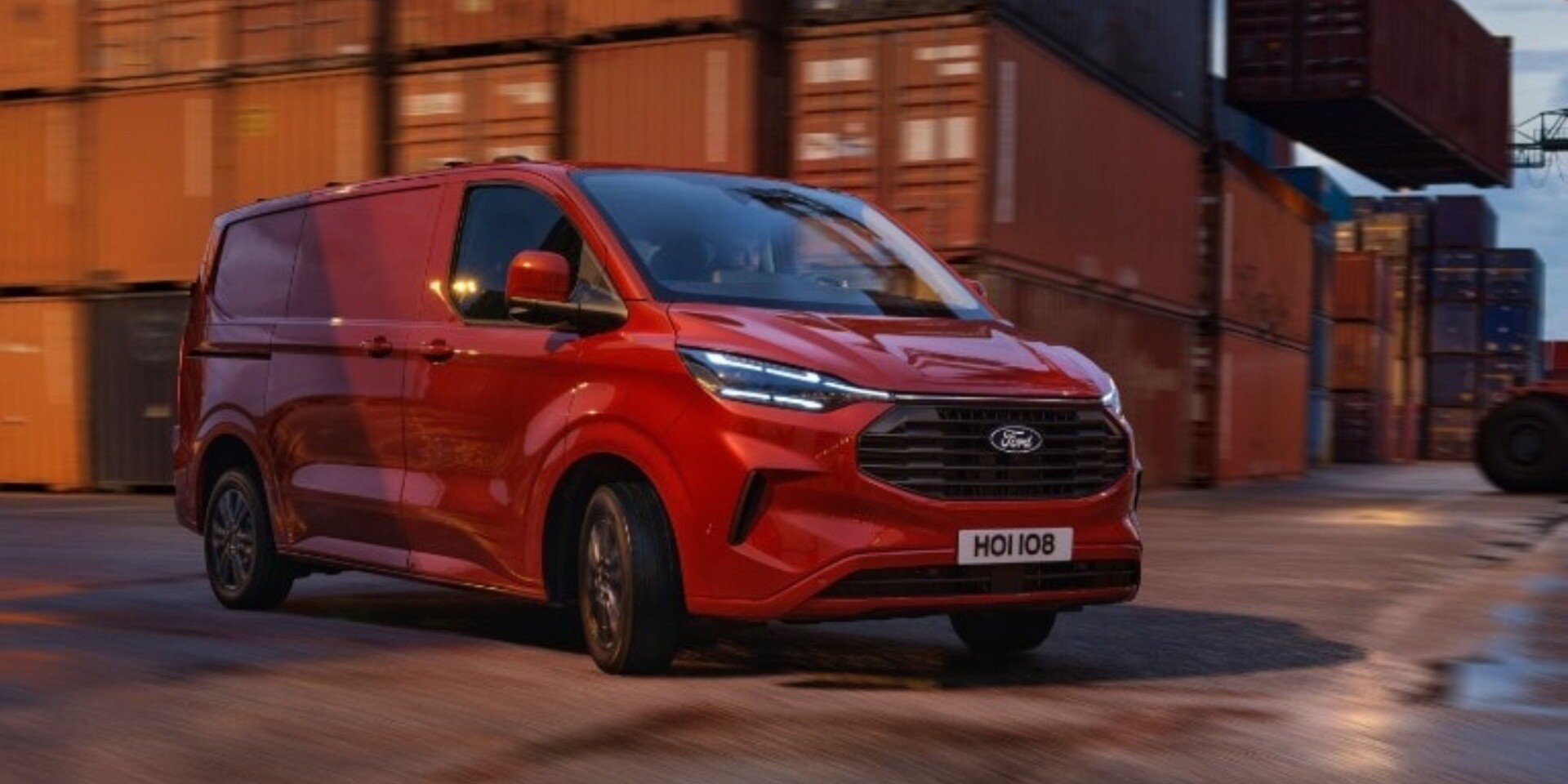
Ford Transit Key Features:
- Available in multiple body styles, including a standard panel van, double cab-in-van, multicab, kombi, and chassis cab.
- Expect a choice of three lengths and two roof heights, these are: medium wheelbase (L2), long wheelbase (L3), long wheelbase extended frame (EF L4) standard roof (H2), high roof (H3).
- A gross vehicle mass (GVM) of up to 4.7 tonnes (4,700kg).
- A max gross payload of up to 2.2 tonnes (2,242kg).
- A cargo load volume of up to 15.2 cubic meters.
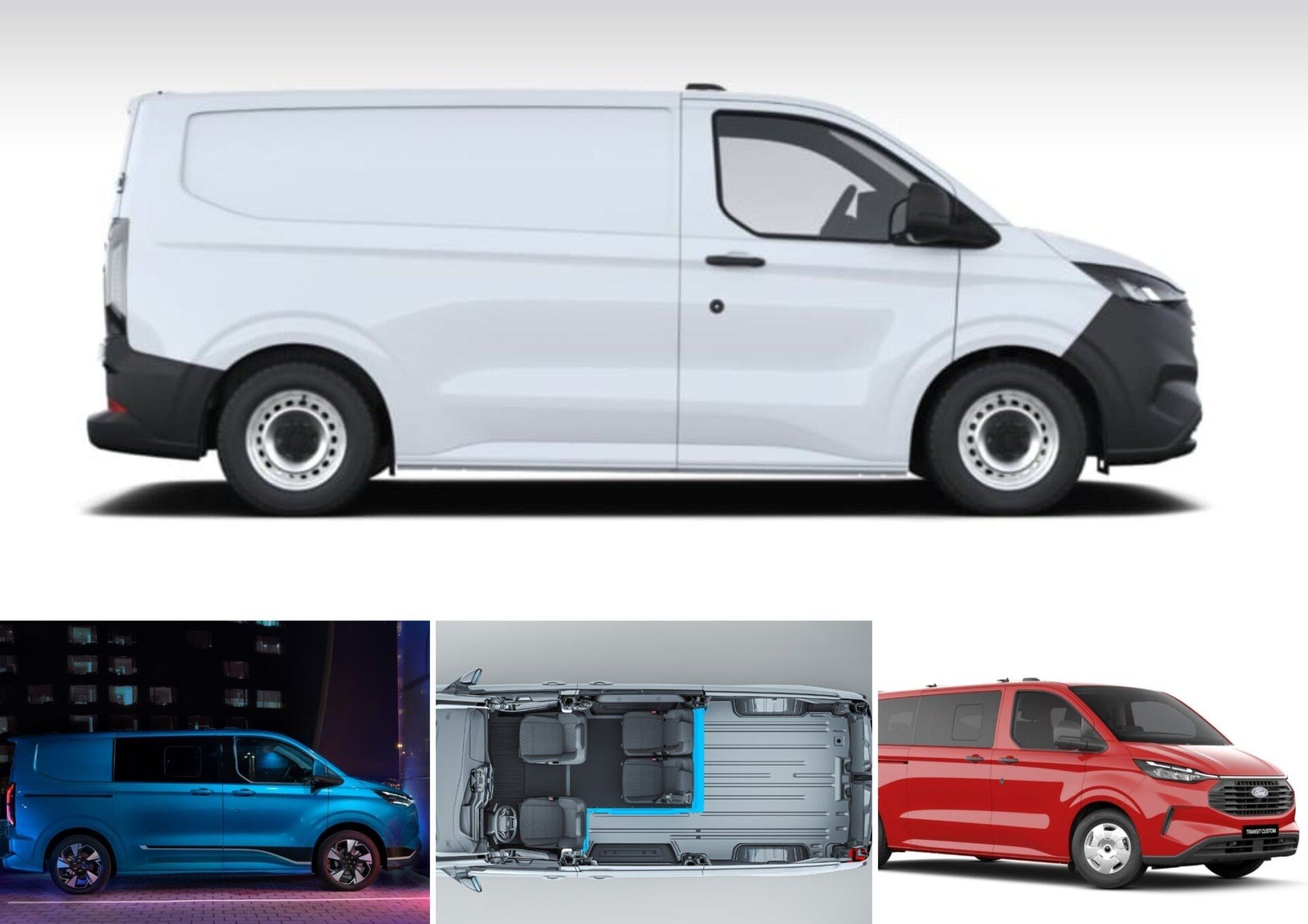
Ford Transit Models Explained:
At this point, it’s important to understand the different models within the Ford Transit van range as it can be confusing. Ford offers several variants within the Transit range, designed to suit various business needs.
Ford Transit Connect
Considered a compact van, the Ford Transit Connect is extremely versatile for small businesses, couriers and urban deliveries. It is available as a standard panel van which is very spacious inside with two or three seats, or a double cab-in-van with two seats in the front row and an extra three seats behind.
The Transit Connect has a cargo volume of up to 3.6 cubic metres, a payload of up to 913kg and a maximum load length of 2,152mm - or 3,400mm with the load-through bulkhead option.
Ford Transit Courier
As the smallest van in the Transit range, the Ford Transit Courier is best suited to urban deliveries and small businesses with light cargo needs.
Based on the Ford Fiesta platform, the Transit Courier is highly manoeuvrable and at home in city environments. Expect a cargo volume of up to 2.9 cubic metres and a payload of up to 595kg.
Ford Transit Custom
The all-new Ford Transit Custom is officially Britain’s best-selling commercial vehicle. As a medium-sized van, it is the go-to choice for tradespeople and shuttle services.
It is available as a standard panel van, double cab-in-van, multicab, and kombi variants, making the Ford Transit Custom the model most directly comparable to the Renault Trafic.
Size-wise, the Transit Custom has a maximum load space of 6.8 cubic metres and a maximum gross payload of up to 1,327kg. Boasting “a solution for every business”, you can expect class-leading load capacity and dimensions that make it a user-friendly all-rounder.
Ford Transit (Full-size)
As the largest van in the Ford range, the full-size Transit is designed to work hard. It’s best for larger businesses, construction firms, and long-distance transport needs among other uses.
Providing the largest cargo capacity and payload in the Transit range, you can expect a maximum loadspace of 15.1 cubic metres, a maximum gross payload of up to 2,447kg, and a maximum load length of up to 4,256mm.
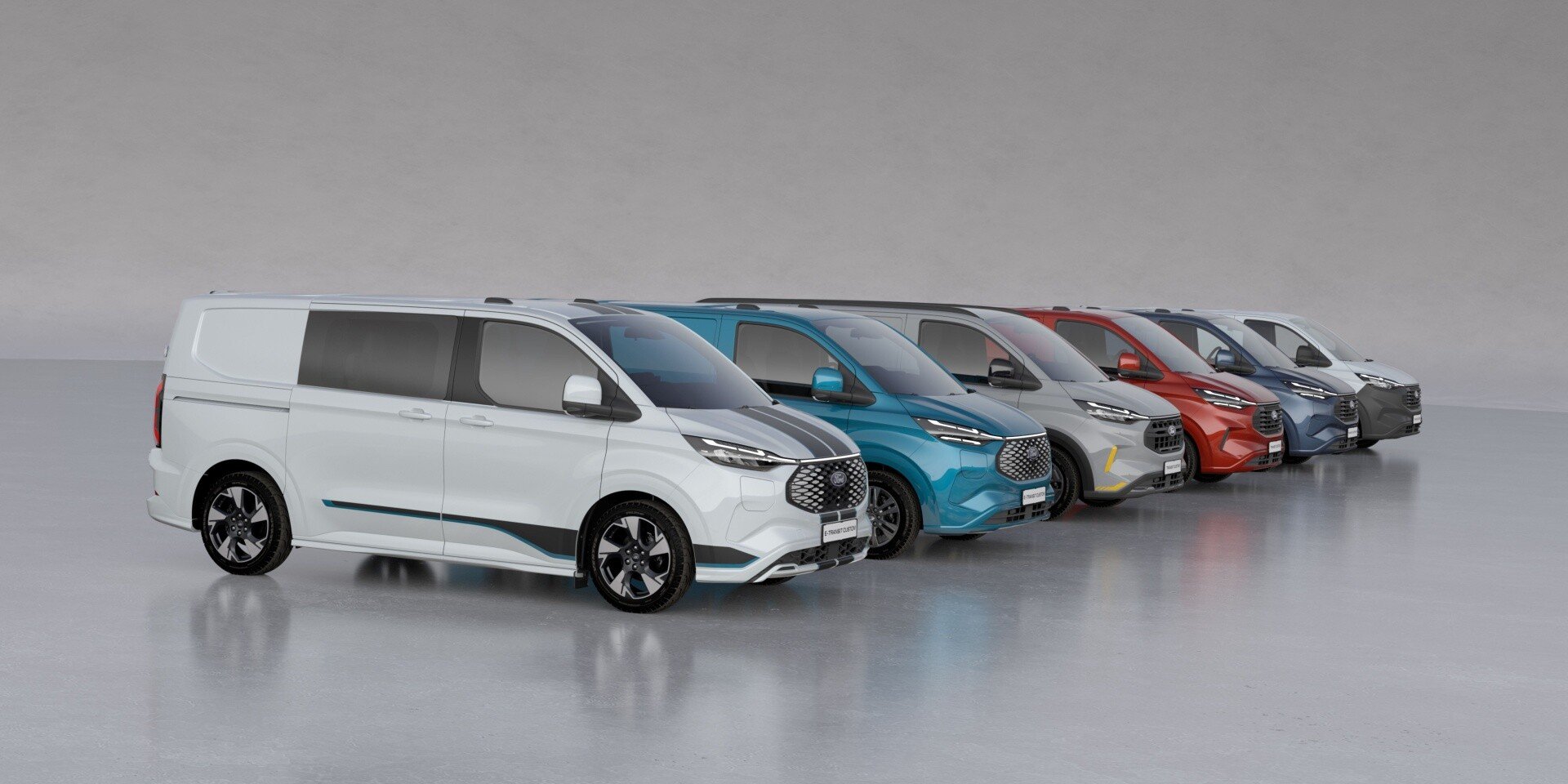
Ford Transit Electric Van Range
Building on its green credentials, Ford boasts an all-electric range of its Transit vans including the E-Transit Custom, Transit Custom Plug-In Hybrid and E-Transit:
E-Transit Custom
The all-electric E-Transit Custom combines zero-emission driving with uncompromised capability. It has a driving range of up to 209 miles and a robust 2.3-tonne towing capacity, delivering the versatility you expect from a Transit but now with a sustainable twist.
Transit Custom Plug-In Hybrid
The best-selling Transit Custom has evolved with a cutting-edge hybrid powertrain. This plug-in hybrid variant offers the perfect blend of petrol and electric capabilities, significantly reducing emissions and fuel costs without sacrificing the Transit's renowned versatility and performance.
E-Transit
The E-Transit is the fully electric incarnation of Ford’s ultimate workhorse. This zero-emission powerhouse does its best to match its diesel counterpart with enhanced capabilities, advanced technology, and the same rugged durability.
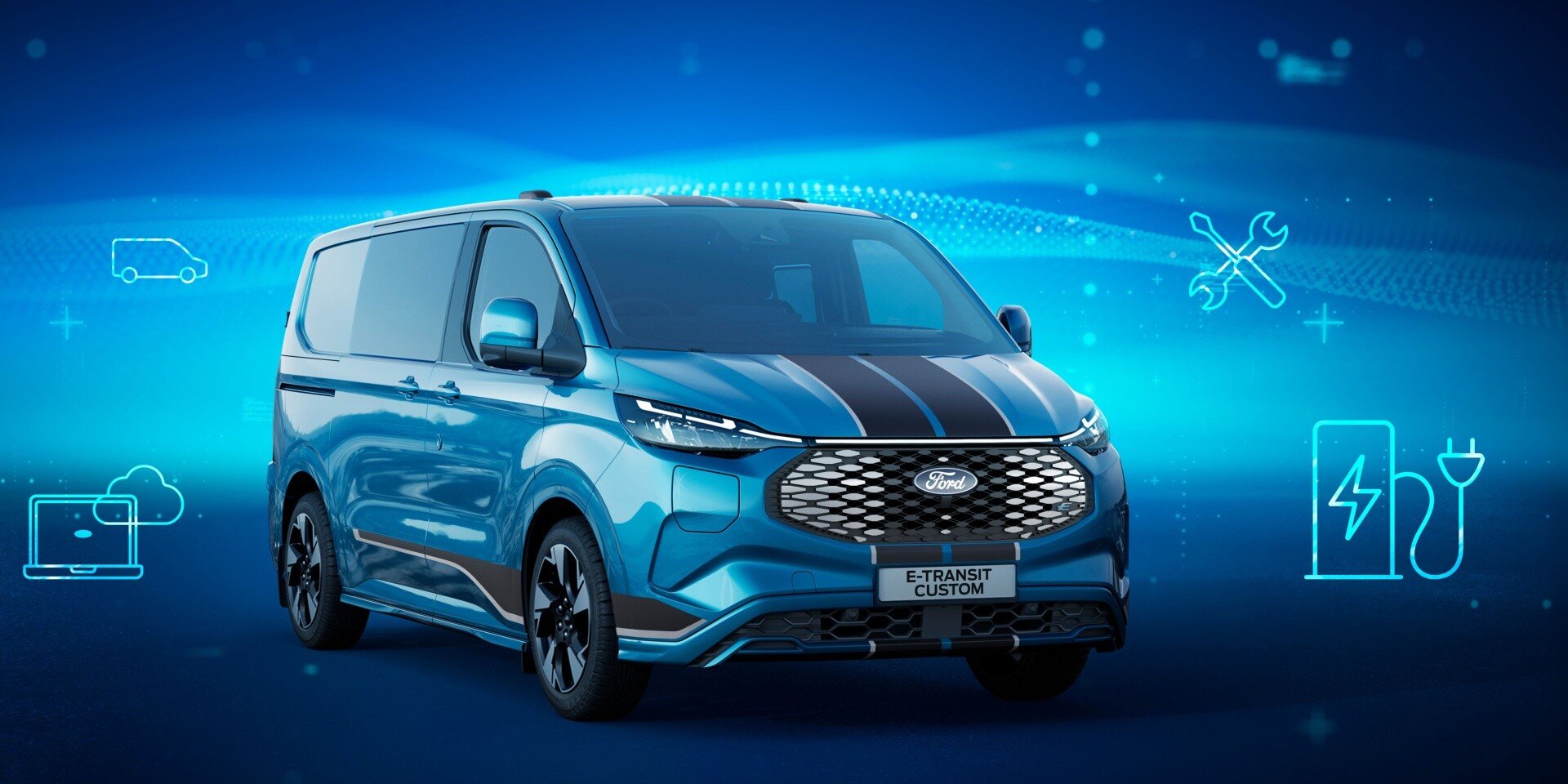
Comparison to the Renault Trafic
When we compare the Renault Trafic van to the Ford Transit range, it's most directly comparable to the Ford Transit Custom model. Both are medium-sized vans designed for similar uses.
In comparison, the full-size Ford Transit is generally larger than the Renault Trafic, offering more cargo space and higher payload capacities. On the other hand, the Transit Connect and Transit Courier are smaller, so more suited to urban environments and businesses with lesser cargo needs.
Ford Transit Custom Engine Options:
2.0-litre EcoBlue diesel engine with various power outputs: 110 PS and 136 PS manual transmission, plus a 136 PS and 170 PS automatic transmission.
2.5-litre petrol engine with an 11.8 kWh plug-in hybrid battery offering up to 35 miles of driving range using electric only.
Fully electric battery with two power outputs: 100kW and 160kW variants offering up to 209 miles of driving range on a single charge.
Ford Transit Custom Trim Levels:
Not a stranger to winning awards, the much-loved Ford Transit Custom van has been crowned International Van of the Year 2024, partly due to its varied range of trim levels:
Trend
The Trend is the entry-level trim for the Transit Custom, offering a solid balance of features and value. Key features include 16-inch steel wheels with full-wheel covers, Ford SYNC with a 13-inch touchscreen, and under-seat storage with a load-through bulkhead, among others.
Limited
The Limited trim adds more comfort and style features, making it ideal for businesses that want a more premium feel. Additional features over and above the Trend trim include a heated driver's seat, LED load-space lighting, and Keyless entry/start, among many others.
Trail
The Trail trim is designed for businesses that need enhanced capability in challenging conditions. Key features include a striking yellow exterior detail, AWD with auto transmission, and auto-power folded and heatable door mirrors.
Sport
The Sport trim adds a touch of athleticism to the Transit Custom, with performance-inspired styling throughout. Distinctive features include 17-inch sport alloy wheels, a sporty body kit with a rear spoiler, and exterior racing stripes.
MS-RT
The MS-RT is a range-topping trim developed in partnership with vehicle styling inspired by motor racing. Unique features include bespoke 19-inch alloy wheels, sports seats with additional bolstering, and painted brake callipers.
Each trim level builds upon the previous one, adding more features and styling elements. The choice between them depends on your needs, budget, and aesthetic preferences.
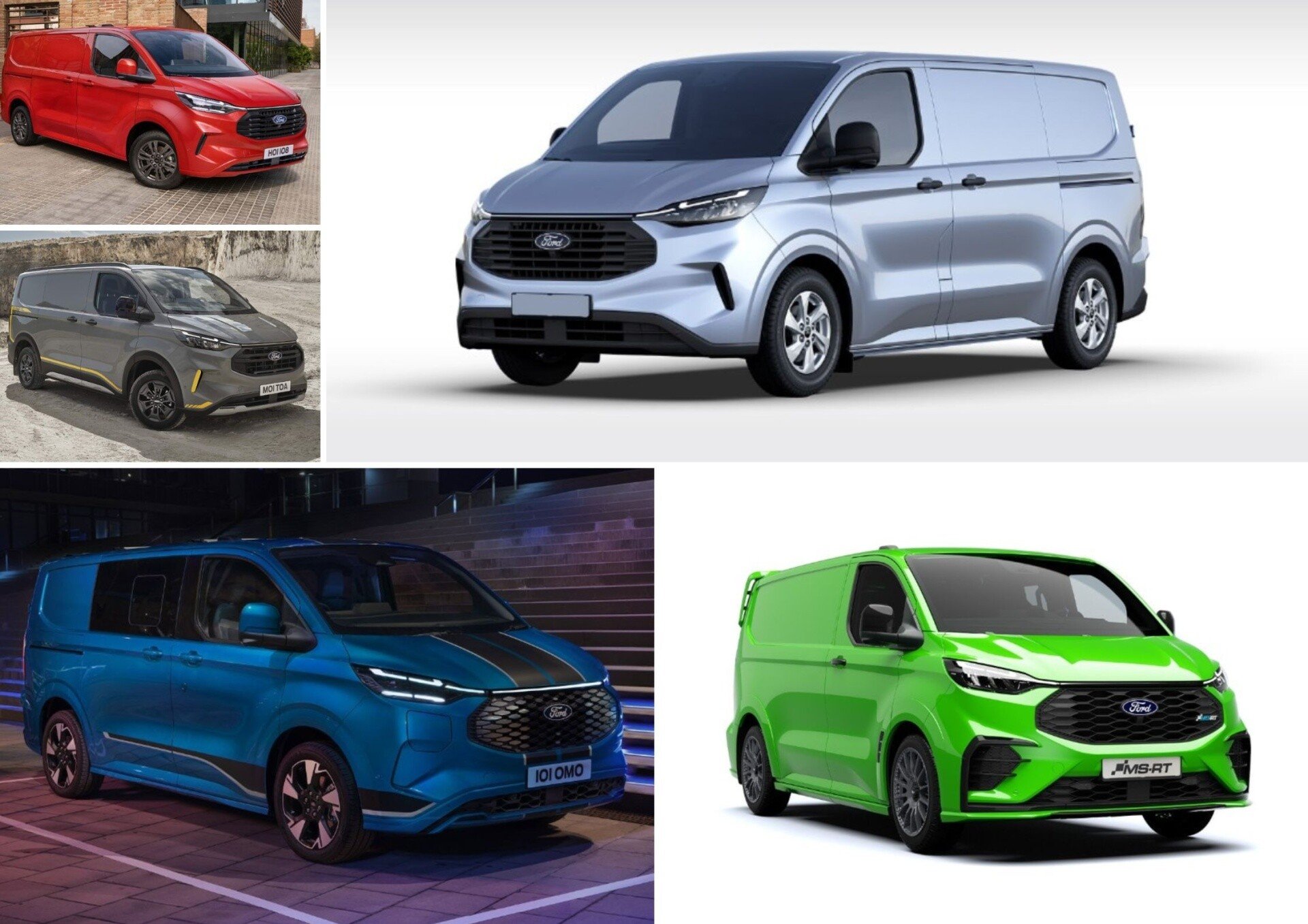
Technology and Safety:
As with most modern vans, the Ford Transit Custom is fitted with driver technology and safety systems branded as Ford Co-Pilot360. Much of this tech is designed to improve the safety of everyone inside the cabin, as well as enhance the overall driving experience. Examples include:
- Pre-Collision Assist with Pedestrian Detection and Automatic Emergency Braking
- Lane-Keeping System
- Forward Collision Warning
- Power-Assisted Steering
- Roll Stability Control
- Rear-View Mirror
- Trailer Sway Control
Dimensions:
From the overall exterior length to width to height, and the interior loadspace, we highlight the dimensions of the Ford Transit Custom van in the table below.
| L1H1 | L1H2 | L2H1 | L2H2 | |
| Overall length | 4,973mm | 4,973mm | 5,340mm | 5,340mm |
| Overall width (with/without mirrors) | 2,272mm / 2,080mm | 2,272mm / 2,080mm | 2,272mm / 2,080mm | 2,272mm / 2,080mm |
| Overall height | 2,000mm | 2,366mm | 1,979mm | 2,343mm |
| Wheelbase | 2,933mm | 2,933mm | 3,300mm | 3,300mm |
| Maximum loadspace length (with/without bulkhead) | 2,554mm / 3,037mm | 2,554mm / 3,037mm | 2,921mm / 3,404mm | 2,921mm / 3,404mm |
| Maximum loadspace width | 1,775mm | 1,775mm | 1,775mm | 1,775mm |
| Loadspace between wheel arches | 1,351mm | 1,351mm | 1,351mm | 1,351mm |
| Load floor to roof | 1,406mm | 1,778mm | 1,406mm | 1,778mm |
Fuel Efficiency:
The Ford Transit Custom van offers impressive fuel efficiency across its range, with some variations depending on the powertrain and specific driving conditions.
Expect approximately 40 mpg for most diesel variants which is entirely achievable in lightly loaded vans, although of course, this may decrease when maximising the full payload capacity.
Engine efficiency is improved with the automatic variant during long-distance driving and on motorways, however, if you spend most of the time driving in the city, then the manual gearbox may be your best option.
Without a doubt, the most efficient transit Custom engine is the Plug-In Hybrid (PHEV) option that offers around 176 mpg depending on your charging habits.
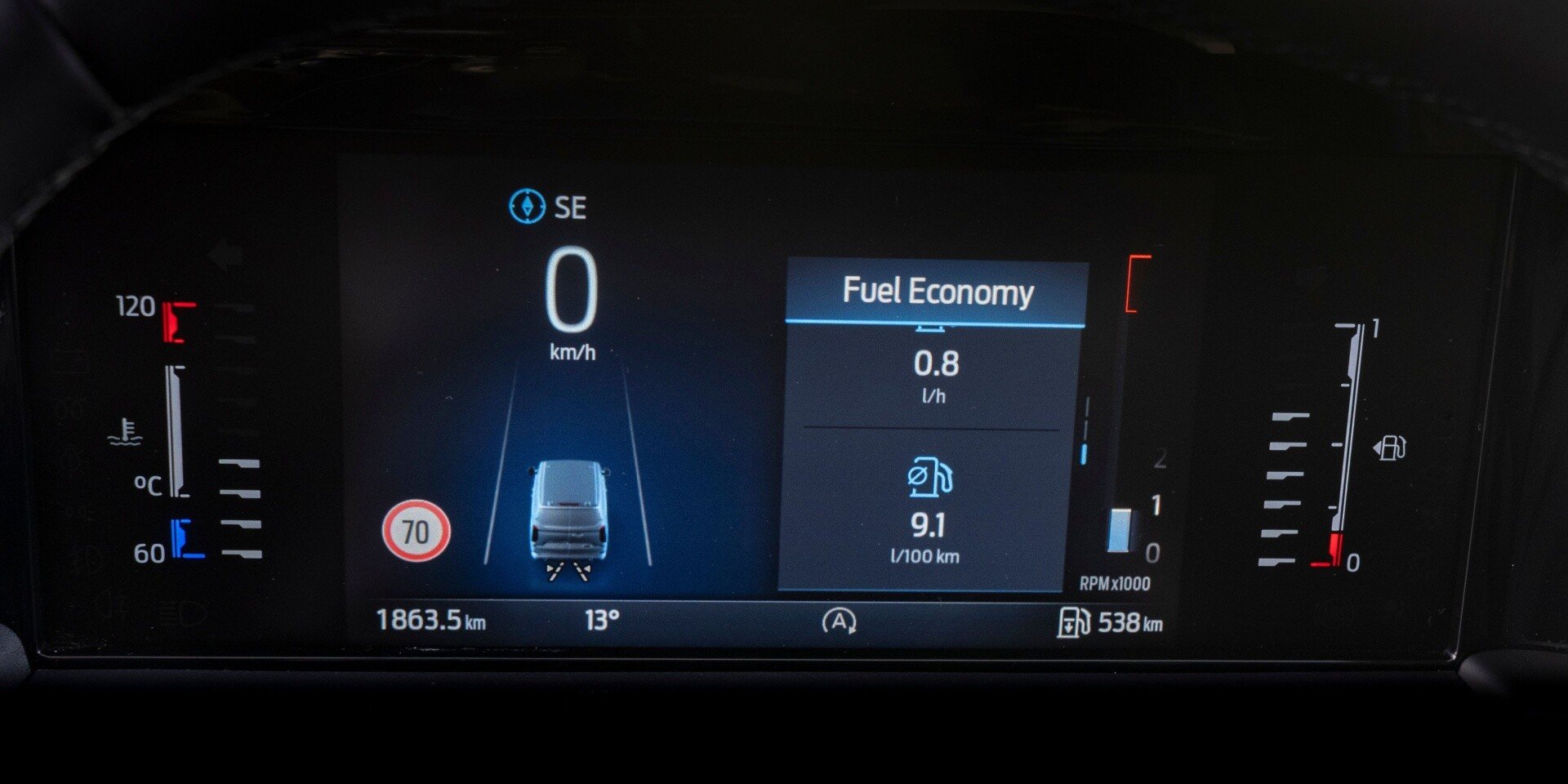
A Closer Look at the Renault Trafic
Now it's time to shift our attention to the very capable Renault Trafic - and it’s a van that leaves the Ford Transit watching its back where the two mid-size titans are concerned!
The Renault Trafic has made significant inroads since its introduction to the UK market in 1980 and has since been consistently praised for its comfort, fuel efficiency, and modern-looking design.
Competing directly with the Transit van in terms of size and capability, we take a closer look at what you can expect from this very popular model…
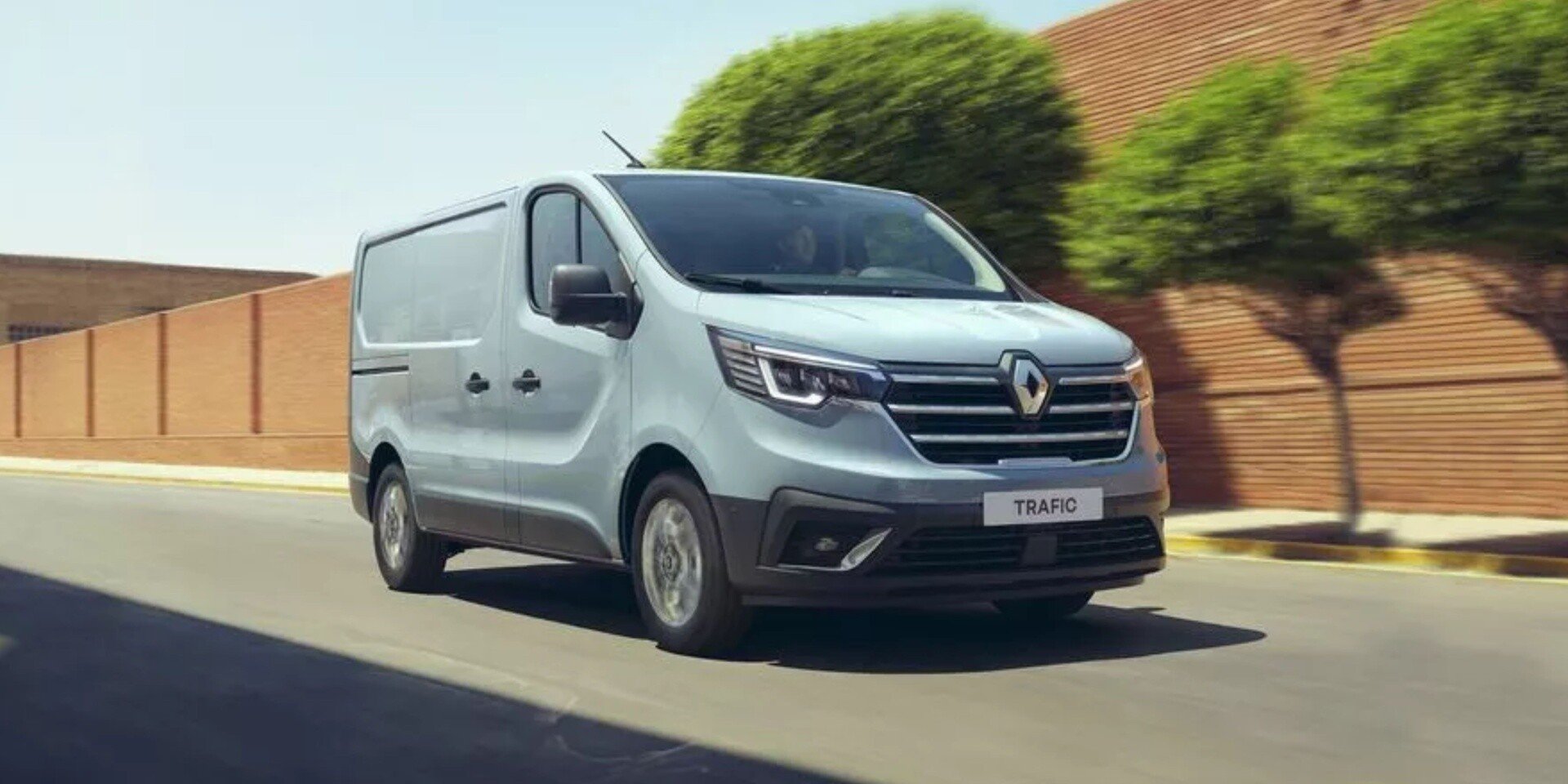
Renault Trafic Key Features:
- Available in panel van, crew van, and passenger versions
- Choose from two lengths and two roof heights
- The gross vehicle weight (GVW) ranges from 2.8 to 3.1 tonnes
- The load volumes vary from 5.2 to 8.9 cubic metres
- Benefit from customisation options including a refrigerated van
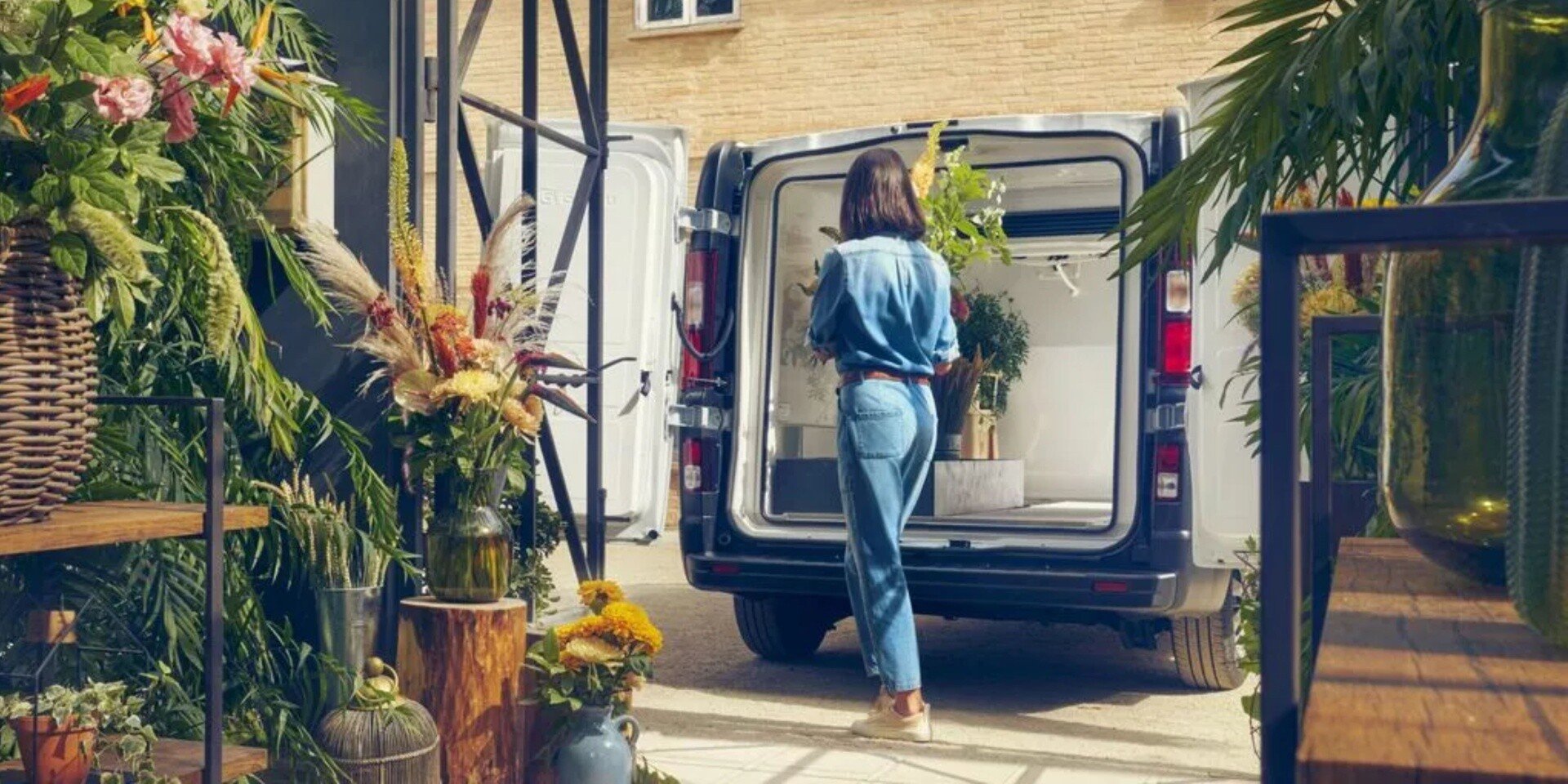
Renault Trafic Models Explained:
Very much considered a “versatile van for every business”, the Renault Trafic van really does stand out from the competition. As a highly adaptable and customisable vehicle, the mid-size Trafic is as diverse as it is meeting the needs of today’s businesses:
Panel Van
The most popular choice is the standard panel diesel van which comes in two length options (L1 and L2) and two roof heights (H1 and H2). Expect a maximum load volume of up to 8.9 cubic metres with the largest variant, and a payload capacity of up to 1,266 kg.
E-Tech Version
The Renault Trafic E-Tech 100% electric represents Renault's commitment to sustainable commercial transport. This zero-emission variant of the popular Trafic panel van combines the versatility and practicality of its diesel counterpart with the benefits of electric propulsion.
Powered by a 52 kWh battery, the Trafic E-Tech offers a range of up to 186 miles (WLTP), making it suitable for urban deliveries and short-haul logistics. It maintains the Trafic's impressive load volume of up to 8.9 m³ and payload capacity of up to 1,266 kg, ensuring businesses don't have to compromise on functionality.

Crew Van
By comparison, the crew cab combines generous cargo space with additional seating for up to six people thanks to a second row of three seats. There’s a load volume of 4.3 cubic metres and a maximum payload of 1,122 kg and can be configured as a short or long wheelbase.
Passenger Van
Also called the Combi 9 Seat variant, the Renault Trafic passenger van can accommodate up to nine passengers making it an ideal choice for airport and hotel shuttle services, tour operators, and school or community transport.
Platform Cab
Ideal for bespoke conversions, the platform cab variant of the Renault Trafic offers unparalleled flexibility for businesses requiring specialised vehicles.
By combining the reliable Trafic base with custom conversions, it provides bespoke solutions that can significantly enhance productivity and efficiency across a wide range of industries.
Renault Kangoo
While this comparison article predominantly features the Renault Trafic van, let’s not forget its smaller cousin - the Renault Kangoo.
A direct competitor to the petite Ford Transit Courier van, the Kangoo measures slightly bigger in size, offering up to 0.2 cubic metres of cargo space. Unlike the Courier, it’s also available as a crew van variant.
Why Choose the Renault Trafic?
Well, our first response to this question is - why not?! There really are so many positives for the Renault Trafic van, that we are big advocates for the brand and all it offers.
Below we highlight what makes the Trafic a true van of all trades:
- Adaptability - With its range of configurations and conversion options, the Trafic can be adapted to almost any business need.
- Efficiency - The van offers a good balance of payload capacity and fuel efficiency.
- Comfort - Provides a comfortable driving experience, reducing driver fatigue on long journeys.
- Modern Features - Incorporates the latest technology and safety features expected in contemporary commercial vehicles.
- Desirability - The Trafic's stylish appearance can be a plus for businesses concerned with image.
- Usability - Its clever design maximises cargo space, especially for lengthy loads.
- Competitive Pricing - The Trafic often offers good value for money in its class and is often hard to beat.
Customisation and Modularity
The Renault Trafic's major selling point is its exceptional modularity, providing businesses with the ability to tailor the van to their specific requirements.
For example, there is an extensive range of options and accessories available allowing for precise customisation, no matter what line of work you’re in. Conversion possibilities seem endless with the amount of options available, including:
- Refrigerated vans (such as the Coolkit Refrigerated Van)
- Mobile workshops
- Passenger transport
- Specialised trade configurations
There are also options to enhance functionality including multiple partition types (such as solid, glazed, and fold-flat options), side-loading doors and rear door options (barn doors or tailgate), and flexible seating arrangements in crew cab models.
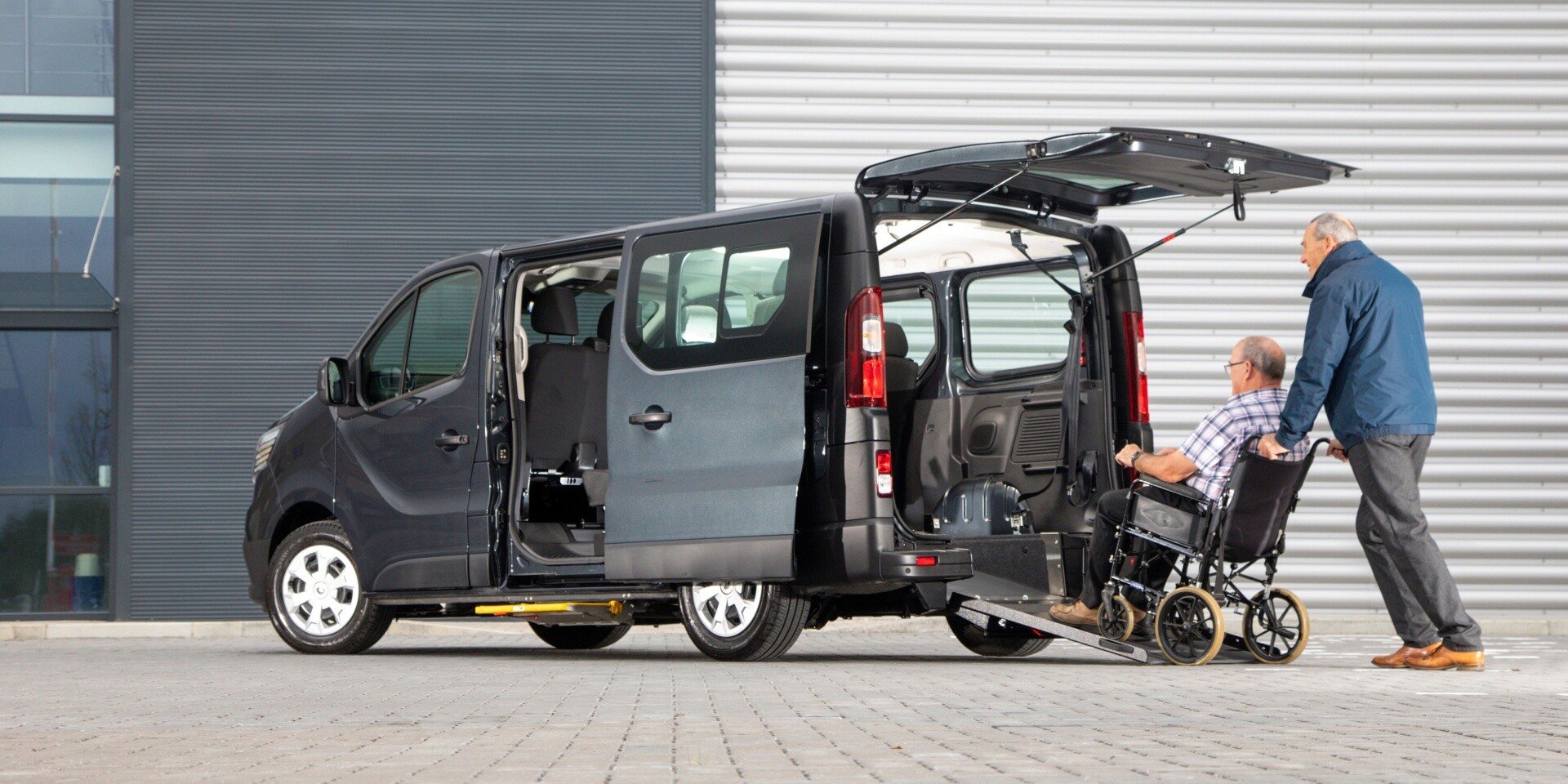
Renault Trafic Engine Options:
- Blue dCi 130
- Blue dCi 150
- Blue dCi 150 Auto EDC
- Blue dCi 170 Auto EDC
Each 2.0-litre diesel option is Euro 6E compliant and complemented by a 6-speed manual transmission as standard, with a 6-speed EDC automatic available on some models.
Renault Trafic Trim Levels:
The Renault Trafic offers three main trim levels, each building upon the previous one to provide increasing levels of comfort, technology, and style:
Advance
The Advance trim is the entry-level option for the Renault Trafic, offering a solid base of features for businesses prioritising functionality and value.
Extra (Advance +)
The Extra trim builds upon the Advance, adding more comfort and technology features for businesses wanting additional amenities without stepping up to the top-tier trim.
Extra Sport (Extra +)
The Extra Sport trim tops the Renault Trafic range, offering a premium experience with enhanced styling and additional technology features.
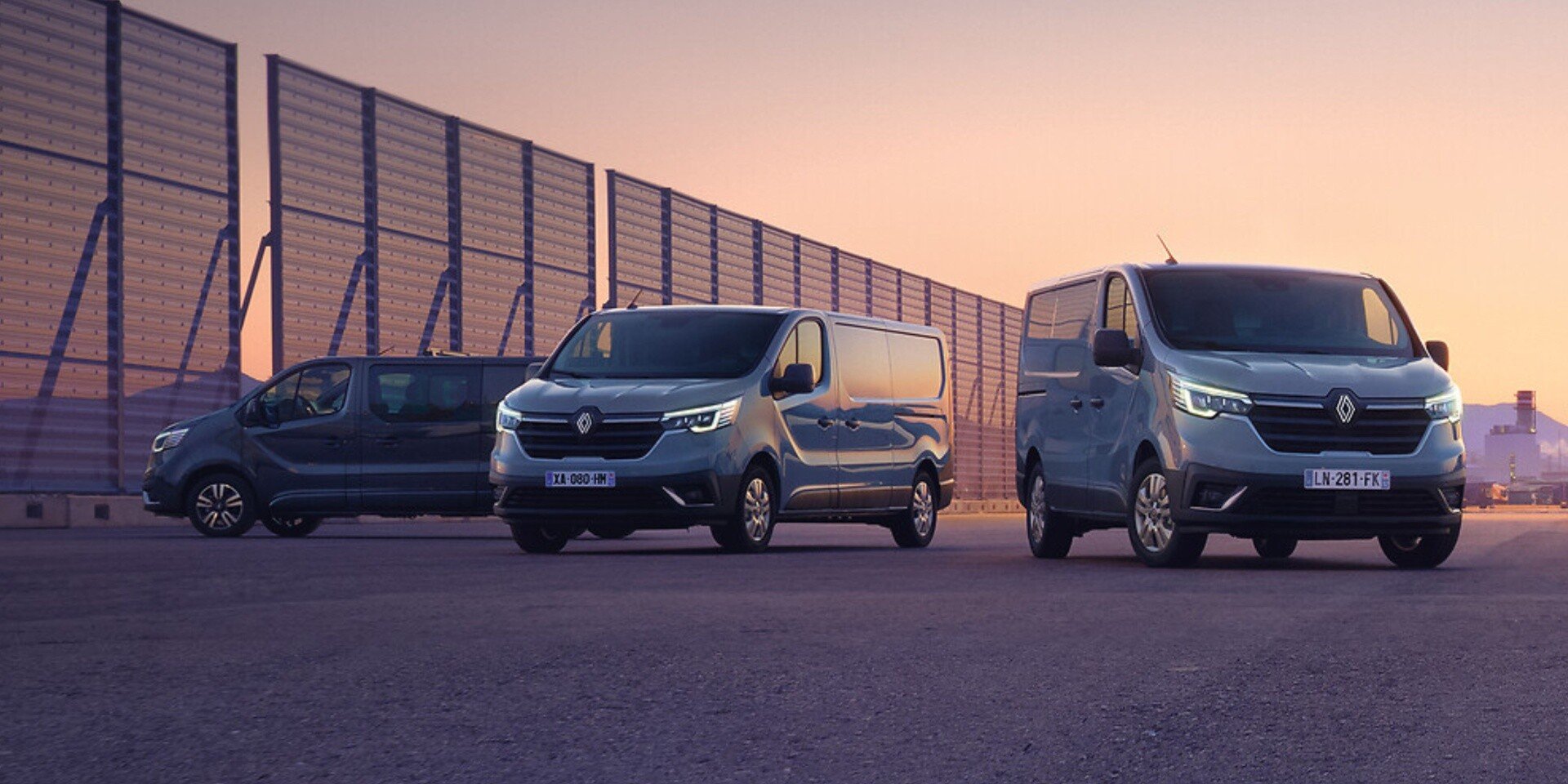
Technology and Safety:
The Renault Trafic is equipped with a range of advanced technology and safety features, designed to enhance driver comfort, improve productivity, and ensure the safety of both occupants and other road users.
- Renault EASY LINK Multimedia System
- ABS with Electronic Brake Force Distribution
- Electronic Stability Control
- Active Emergency Braking System
- Rear Parking Sensors
- Blind Spot Warning
- Automatic High-Beam

Dimensions:
When it comes to width, length, and height, you want to make sure the size of the van suits you and your business. Our technical data table below compares the dimensions of the Renault Trafic panel van:
| L1H1 | L1H2 | L2H1 | L2H2 | |
| Overall length | 4,999mm | 4,999mm | 5,399mm | 5,399mm |
| Overall width (with/without mirrors) | 1,956mm / 2,283mm | 1,956mm / 2,283mm | 1,956mm / 2,283mm | 1,956mm / 2,283mm |
| Overall height | 1,971mm | 2,495mm | 1,967mm | 2,498mm |
| Wheelbase | 3,098mm | 3,098mm | 3,498mm | 3,498mm |
| Maximum loadspace length (without/with space under bench seat) | 2,537mm / 2,950mm | 2,537mm / 2,950mm | 2,937mm / 3,350mm | 2,937mm / 3,350mm |
| Maximum loadspace width | 1,662mm | 1,662mm | 1,662mm | 1,662mm |
| Loadspace between wheel arches | 1,268mm | 1,268mm | 1,268mm | 1,268mm |
| Load floor to roof | 1,387mm | 1,898mm | 1,387mm | 1,898mm |
Fuel Efficiency and MPG Expectations:
In some cases, fuel efficiency can play a major factor when choosing a new van, as it significantly impacts running costs. The Renault Trafic is known for its competitive fuel economy in the mid-sized van segment, ranging on average from 40.9 mpg up to 47.2 mpg - making it one of the most efficient models on the market.
Many Trafic owners report that fuel efficiency improves after the initial "breaking-in" period of around 10,000 miles. Long-term users often find their average MPG settles slightly higher than their initial figures, proving that the Trafic van is a great investment.
Tips for Maximising Fuel Efficiency
To get the best possible MPG (miles per gallon) from your Renault Trafic van, we recommend you follow these seven steps:
- Smooth driving is key, so try to accelerate gently and anticipate braking rather than waiting until the last minute.
- Make the most of cruise control when travelling on motorways.
- Ensure your van is regularly serviced.
- Keep all four tyres properly inflated.
- Remove any unnecessary weight when possible.
- If you can, plan routes to avoid heavy traffic and hilly areas.
- Use stop-start technology if your model is equipped with it.
Ford Transit vs Renault Trafic: What are the Similarities and Differences?
Because these two vans are considered competitors in the mid-size market, there are of course many similarities between them. However, there are also some clear differences that set them apart, as we highlight below…
Similarities:
- Mid-size vans that are suitable for a wide range of commercial uses.
- Offer various body styles including panel vans, crew vans, and passenger versions.
- Provide good fuel economy for their class.
- Feature modern safety technologies and driver assistance systems.
- Come with options for customisation and conversion.
Differences:
- Looks-wise, the Transit has a more traditional, robust appearance, while the Trafic sports a more modern, streamlined look.
- Ford typically offers a wider range of engine choices.
- The Trafic is often praised for its car-like interior comfort.
- The Transit has a longer history in the UK market.
- Where payload is concerned, the Transit generally offers slightly higher options.
- However, the Trafic’s standard panel van is slightly longer than the Transit equivalent.
Popular Uses of Both Vans
Do you need inspiration in terms of which van best suits what trade? Then look no further!
| Ford Transit Uses | Renault Trafic Uses |
| Construction and trade work | Urban delivery services |
| Delivery services | Mobile businesses (such as coffee shops and pet grooming) |
| Mobile workshops | Trade professionals (electricians, plumbers) |
| Passenger transport (in minibus configuration) | Airport and hotel shuttles |
| Camper van conversions | Small fleet vehicles for businesses |
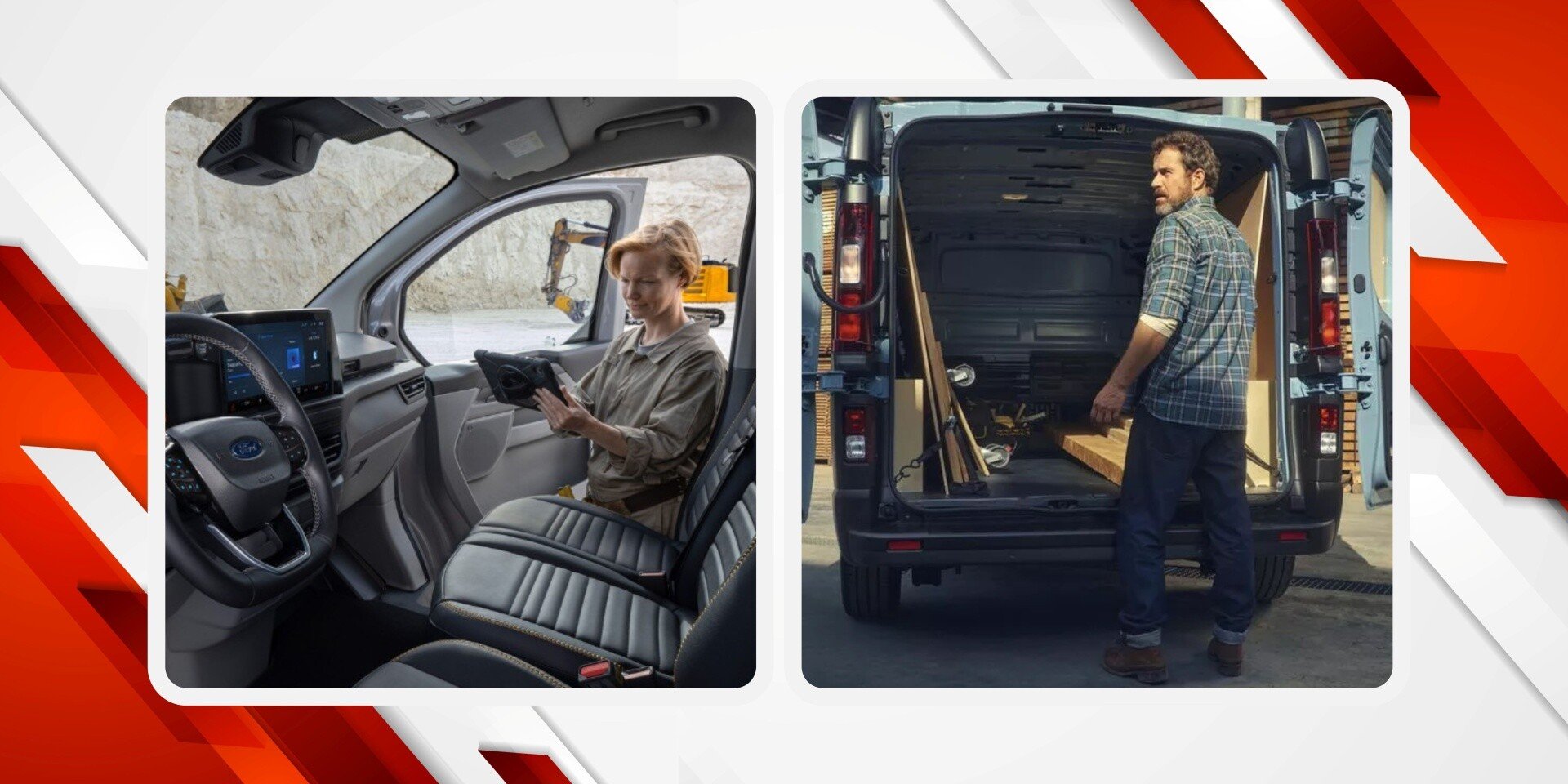
Price Comparison: Ford Transit vs Renault Trafic
When it comes to making a decision between the Ford Transit and Renault Trafic, the price can be a deal-breaker. Below, we break down the costs for both new and used models to see which van offers the best value for money…
New Ford Transit Custom
- Starting price: Approximately £40,000
- Higher-spec models can reach up to £75,000
New Renault Trafic
- Starting price: Approximately £36,000
- Higher-spec models can reach up to £48,000
The Renault Trafic comes out on top in terms of initial purchase price for new vans. It offers a similar level of features and capabilities to the Ford Transit but at a slightly lower price point. This makes it an attractive option for businesses looking to minimise upfront costs.
Used Ford Transit Custom
- 3-year-old models: £20,000 to £28,000
- 5-year-old models: £12,000 to £16,000
Used Renault Trafic
- 3-year-old models: £10,000 to £21,000
- 5-year-old models: £6,000 to £12,000
The Renault Trafic offers better value, as it's generally cheaper to purchase on the used market.
Make the most of unbeatable deals here at Loads of Vans where you can get your hands on a new Renault Trafic (with delivery mileage) for just £19,990 - saving you a whopping £7,510 on the RRP! Shop our deals here.
Conclusion: Which One Should You Choose?
In the battle of the mid-size vans, both the Ford Transit and Renault Trafic prove to be formidable contenders. Each brings its unique strengths to the table, catering to different needs and preferences within the commercial vehicle market.
So let’s start with the Ford Transit; with its robust build, versatility, and strong brand presence, the van continues to be a go-to choice for many UK businesses. Its proven reliability provides peace of mind for owners, while its wide range of configurations ensures that there's a Transit for almost every commercial need.
On the other hand, the Renault Trafic impresses with its modern design, fuel efficiency, and car-like comfort. It's an excellent choice for businesses that prioritise running costs and driver comfort, particularly in urban environments.
The Trafic's stylish appearance also makes it an attractive option for companies conscious of their brand image. And as for price point, the Renault Trafic is hard to beat.
Ultimately though, the choice between these two vans will depend on your specific daily requirements, budget, and personal preferences. Both the Ford Transit and Renault Trafic have proven their worth, so either could be the perfect fit for your business.

FAQs and Answers
Q: Which van has better fuel economy?
A: The Renault Trafic is generally known for having slightly better fuel economy, but actual figures can vary depending on the specific model and engine choice.
Q: Are Ford Transits more reliable than Renault Trafic vans?
A: Ford Transits have a long-standing reputation for reliability. However, modern Renault Trafic vans are also very reliable. It's important to consider factors like maintenance history and specific model years when purchasing a used model.
Q: Which van holds its value better?
A: Historically, Ford Transits have held their value slightly better due to their strong brand reputation in the UK. However, Renault Trafics also maintain good resale values, especially well-maintained, newer models.
Q: Can both vans be converted into campers?
A: Yes, both the Ford Transit and Renault Trafic are popular choices for camper van conversions due to their size and versatility.
Q: Which van is better for urban deliveries?
A: Both vans are suitable for urban deliveries. However, the Renault Trafic might have a slight edge in tight city environments due to its car-like handling and potentially better fuel efficiency in stop-start traffic.
Q: What are the disadvantages of the Ford Transit?
A: While the Ford Transit is a highly capable van, some potential disadvantages include:
- Higher initial purchase cost compared to some competitors, such as the Renault Trafic.
- The larger size of some models can make manoeuvring in tight spaces more challenging.
- Older models can be prone to rust.
Q: Is the Renault Trafic a reliable van?
A: Yes, the Renault Trafic is generally considered a reliable van. Modern Trafic models have improved significantly in terms of build quality, but like with any vehicle, regular maintenance is the key to ensuring long-term reliability.
Q: What is the Ford equivalent to the Renault Trafic?
A: The Ford Transit Custom is the closest equivalent to the Renault Trafic in terms of size and market positioning. Both are medium-sized vans aimed at similar market segments.
Q: How long will a Renault Trafic last?
A: With proper maintenance, a Renault Trafic can last 200,000 to 300,000 miles or more. However, the lifespan can vary greatly depending on usage, driving conditions, and maintenance.
Q: What is the life expectancy of a Ford Transit van?
A: Ford Transit vans are known for their longevity. With regular maintenance, many Ford Transits can last 250,000 to 300,000 miles or more. Some well-maintained Transits have even been known to surpass 500,000 miles!
Q: What is the common fault on a Ford Transit?
A: While Ford Transits are generally reliable, some common issues reported by owners include:
- Clutch problems on manual transmissions.
- Issues with the diesel particulate filter (DPF) on some diesel models.
- Wear on suspension components, particularly on vehicles that frequently carry heavy loads.
- Electrical issues in older models.
The UK’s Best-Priced Renault Trafic Vans
At Loads of Vans, we're proud to be one of the oldest and most trusted Renault van dealers in the South of England. Our extensive range of Renault Trafic vans caters to all business needs, from panel vans to crew cabs and beyond.
With our expert knowledge and commitment to customer satisfaction, we can help you find the perfect Trafic for your business. Whether you're looking for a new or used model, our team is here to provide expert advice, competitive pricing, and hands-on support.
Visit our showroom in Sutton, London, to experience the Renault Trafic's comfort, efficiency, and versatility for yourself, and let us help you make the right choice for your business - we’re open seven days a week!
Don’t forget to search our too-good-to-miss clearance deals on the Renault Trafic, where you could save thousands of pounds today thanks to our exclusive online offers.


